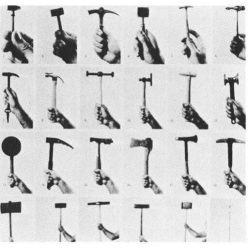The resources shared for this blog offer different perspectives on the social, cultural and political perceptions of religion in contemporary society: namely highlighting the way religion is positioned as antithetical to rational, liberal, Western thought. As with the first blog, I found the theoretical reading around epistemic justice a really useful framework for unpicking the shorter resources included as part of this task, allowing me to situate religious discrimination in a wider, structural context. For example, the last video discusses religious identity being seen as ‘other’ and the interviewee speaks of trying to find common ground with people who may find his identity threatening by referring to or emphasising other aspects of his identity. I could not but see this in the context of epistemic injustice where “a subject suppresses their own testimony out of only an anticipatory fear owing to their not knowing whether their interlocutor will understand their religious beliefs and practices” (Rekis, 2023, p.785-786).
In her essay, Jaclyn Rekis outlines the way epistemic injustice operates with regards to religious practices, mapping out its implications by considering religious identity from the point of view of social identity and as a worldview (2023). Rekis refers to Fricker’s definition of epistemic injustice as instances where “individuals can be harmed in their capacity as knowers when their testimony is wrongly diminished according to inequalities in social power” (Rekis, 2023, p.780). The way epistemic justice operates in relation to religious identity is mainly through a denial of religious testimony as a valid form of knowledge and experience of the world. According to Rekis, this is particularly salient in secular environments such as academia where ‘rational’, naturalistic worldview dominates, implicitly discrediting other forms of knowledge or other types of knowing.
This text made me reflect carefully on my teaching practice in Contextual and Theoretical Studies. We often encourage students to draw on their own experiences in their research, especially when it comes to third year dissertation modules (CTS3). However, we still ask students to follow ‘appropriate academic standards’ in their research, drawing from ‘credible’ sources and supporting their writing with ‘evidence’. Reading the essay cited above has made me realise how such language is deeply rooted in a Western secular tradition that may present barriers or exclude forms of knowing, such as religious knowledge, that Rekis outlines, as well as tacit or embodied knowledge.
This resource has made me question how and what we teach, what expectations we set for students and consider how we may implicitly discriminate against students whose religious identity shapes their positionality, their worldview, their interests and their creative work. Equally, as Kwame Anthony Appiah discusses in his talk, it has also made me reflect on how these different forms of knowledge production – one more ‘secular’, based on written forms, and the other more ‘religious’, based on oral traditions, for example – can coexist and how we can support students to engage with different modes of research or approaches to knowledge. In the first instance, it has highlighted the importance of reviewing the language of our unit guides, assignment briefs and learning outcomes to consider whether there may be different ways of thinking about ‘Knowledge’ and ‘Enquiry’ as two main criteria through which we assess CTS units.
